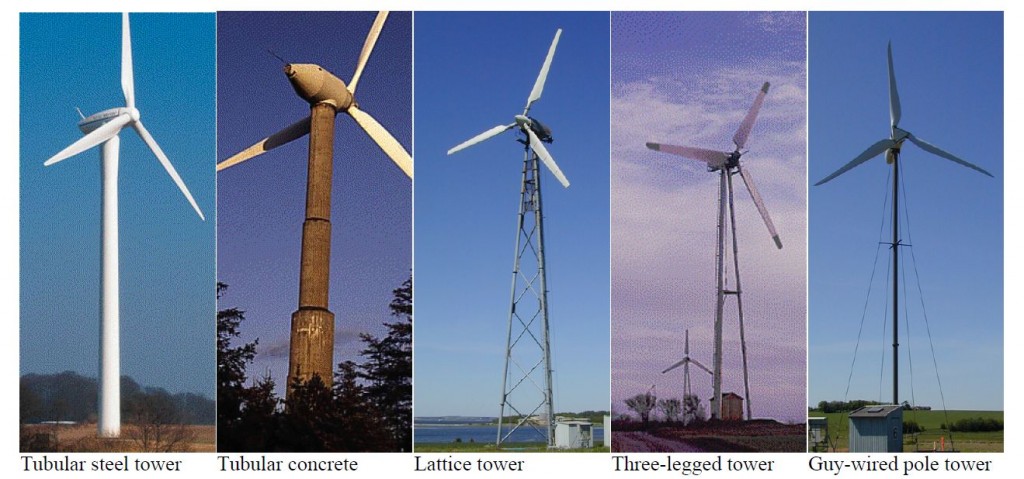Towers are an important element in the structure of a WTG, not only for structural reasons (they transmit the loads from the nacelle to the foundation) but also for economical reasons: they highest the tower, the biggest the amount of energy produced.
For instance, with an increase of 20 meters from the standard 80 meters height an additional energy production around 5% can be obtained. In the future higher towers are expected, also because in mature market the most productive locations have already been used.
The average height of tower installed in Europe is around 80 meters. Modern towers have a lift inside, a ladder and several intermediate platforms. Another item that can be hosted in the tower, normally at the bottom, is the MW transformer.
Towers, above all standard steel towers, aren’t a high technology product and there are several companies with the expertise and capabilities to do them. For this reason they are often outsourced.
Towers can be made of several material following different design concepts:
- Lattice
- Steel (tubular or segmented)
- Concrete
- Hybrid
Lattice tower were common in the past when turbine where smaller (lass than a MW), but are seldom used today. Their biggest problems are a notable visual impact, and higher construction and maintenance costs. They have several advantages: they use less materials (about 50% of a standard steel tower with the same stiffness) and they produce less shadow.
Tubular steel towers are the most widely used solution. They normally have a conical shape and a diameter varying from approximately 4.5 meters at the base to 2 meters at the top, divided in 3 or 4 sections assembled at the wind farm (they are bolted together). The length of a section can vary from 20 to 30 meters. Basically they are manufactured with steel sheets cut, rolled and welded.
The new steel towers of more than 100 meters have a base section diameter over 5 meters: this can be a problem, because in many countries the maximum transportable size by road is less than 4.9 meters.
Siemens is currently working with Andresen Towers to a longitudinally, on site bolted steel-shell tower.
Concrete towers are a solution in countries were steel price is unusually high (for instance in Brazil, where steel production is almost a monopoly). They are made of several smaller precast pieces assembled on site. This solution allows an easier transportation due to the smaller dimension of the components and a good control of the quality of the materials. They biggest problem is the weight (unless they are designed in a biggest number of pieces, they can weight more than the nacelle)
Hybrid towers are another solution used by several manufacturer to reduce the exposition to the steel price volatility, the main drawbacks is that they are quite complicated to assembly, so they have higher installation costs.
Other solutions are available (for instance guy-wired pole tower), but they are used only in very small turbines.

Leave a Reply